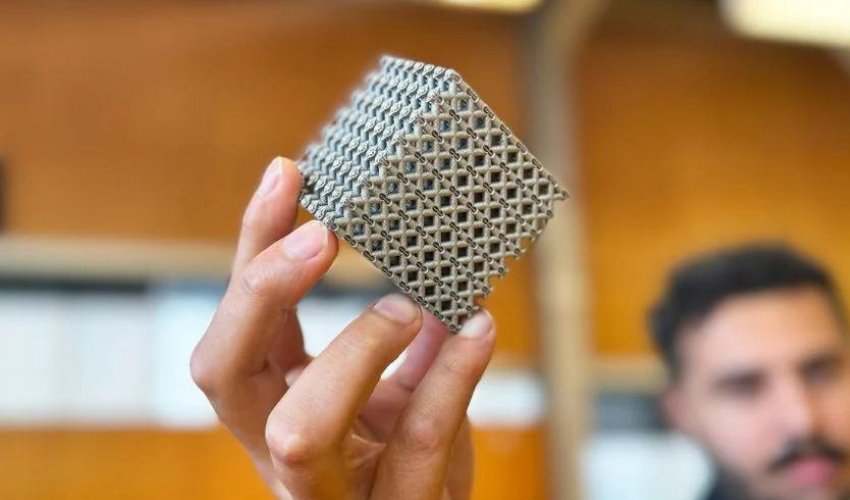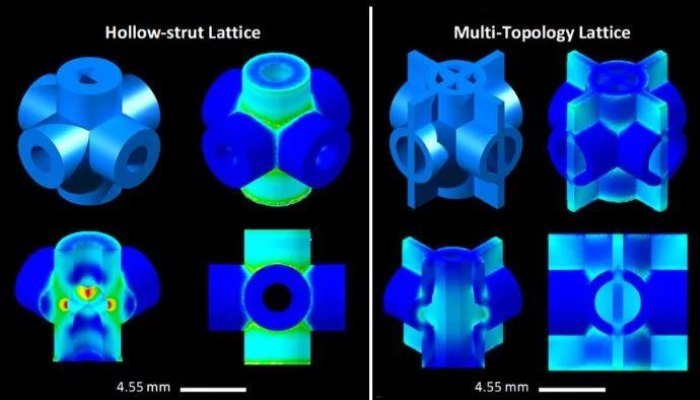New 3D Printed Metamaterial Could Revolutionize Aircraft and Rocket Parts Production

Repeatedly, researchers draw inspiration from nature to drive innovation. Recently, we highlighted the development of a novel 3D printing technique by researchers inspired by chameleons. Similarly, the Fraunhofer Institute is exploring insect-inspired wood binders for 3D printing. In the most recent breakthrough, scientists at RMIT University have engineered a metamaterial using 3D printing, featuring a lattice structure of hollow struts reminiscent of the resilience found in organ pipe corals (Tubipora musica) or the hollow stems of the Victoria water lily. This new material could impact aircraft or rocket parts production, for example.
The 3D printed metamaterial was produced at the RMIT Advanced Manufacturing Precinct using the Laser Powder Bed Fusion (LPBF) 3D printing process from a titanium alloy, which in itself is not a novelty. The material’s novelty and nomenclature stem from its artificial composition, possessing distinct properties absent in natural counterparts. Resembling a 3D printed titanium lattice cube, this metamaterial boasts a remarkable strength-to-weight ratio unprecedented in natural materials, seamlessly merging lightweight attributes with exceptional strength. The developed metamaterial’s lattice structure is notable: it is 50% stronger than the next most durable material, the cast magnesium alloy WE54. WE54 shares a similar density and is often used in the aerospace industry.

Stress concentrations in red and yellow on the grid (left), while (right) the new grid structure distributes the stress more evenly.
The Path to a More Stable Material
According to RMIT professor Ma Qian, in the past, decades of attempts to replicate the hollow “cellular structures” in metals have failed due to problems with manufacturability and the concentration of stress on the inner areas of the hollow struts, which has led to premature failures. Detailing this process, Qian explained: “Ideally, the stress in all complex cellular materials should be evenly spread. However, for most topologies, it is common for less than half of the material to mainly bear the compressive load, while the volume of material is structurally insignificant.”
Thanks to 3D printing, conventional limits can be surpassed, allowing for superior load distribution and enhanced strength. Qian added, “We designed a hollow tubular lattice structure that has a thin band running inside it. These two elements together show strength and lightness never before seen together in nature. By effectively merging two complementary lattice structures to evenly distribute stress, we avoid the weak points where stress normally concentrates.” Lead author of the study and RMIT Ph.D. student Jordan Noronha commented on the new development with the following words:
Compared with the strongest available cast magnesium alloy currently used in commercial applications requiring high strength and light weight, our titanium metamaterial with a comparable density was shown to be much stronger or less susceptible to permanent shape change under compressive loading, not to mention more feasible to manufacture
The newfound lattice structure can be produced in several sizes ranging from millimeters to meters, achievable through various types of printers. The research team envisions further applications in higher-temperature environments in the future. Nevertheless, widespread industrial adoption may be delayed as the technology required for production remains inaccessible to the public. For more information on this project, click here.
What do you think of this new 3D printed metamaterial? Let us know in a comment below or on our LinkedIn, Facebook, and Twitter pages! Don’t forget to sign up for our free weekly newsletter here, the latest 3D printing news straight to your inbox! You can also find all our videos on our YouTube channel.
*All Photo Credits: RMIT University







